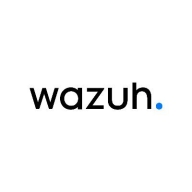

Find out in this report how the two Security Information and Event Management (SIEM) solutions compare in terms of features, pricing, service and support, easy of deployment, and ROI.
It is ineffective in terms of responding to basic queries and addressing future requirements.
The Palo Alto support team is fully responsive and helpful.
The documentation is good and provides clear instructions, though it's targeted at those with technical backgrounds.
There is no dedicated technical support for Wazuh as it is open source.
We use the open-source version of Wazuh, which does not provide paid support.
Without proper integration, scaling up with more servers is meaningless.
Cortex XSIAM is highly scalable.
It can accommodate thousands of endpoints on one instance, and multiple instances can run for different clients.
Scalability depends on the configuration and the infrastructure resources like compute and memory we allocate.
The product was easy to install and set up and worked right.
Overall, Cortex XSIAM is stable.
The stability of Wazuh is strong, with no issues stemming from the solution itself.
The stability of Wazuh is largely dependent on maintenance.
In terms of incident response automation, it is quite poor due to the lack of integration with all security tools, making manual intervention necessary.
Cortex XSIAM needs improvements in terms of data onboarding, parsers, and third-party integration supports.
Cortex could improve the detection and online resolution of security vulnerabilities.
The integration modules are insufficiently developed, necessitating the creation of custom integration solutions using tools like Logstash and PubSub.
An issue I noticed is with tag values in certain rules not functioning properly.
There is room for improvement by integrating more AI into Wazuh.
Cortex XSIAM is pretty expensive, and the licensing process is not very comfortable.
The first impression is that XSIAM would be more expensive than others we tried.
The licensing cost of Cortex XSIAM is more or less the same as Splunk, making it quite expensive compared to other tools.
Totaling around two lakh Indian rupees per month.
Since Wazuh is open source, the pricing for support could be applicable to medium-sized companies without much issue.
Cortex XSIAM is able to detect abnormal behavior of malicious code and subsequently block it.
The flexibility for creating manual workflows stands out.
Its signature-less subscriptions and robust detection power stand out in improving threat detection.
The fact that it is open source means it is always being expanded, which is beneficial for customizing solutions for individual client requests.
We found the MITRE framework mapping and the agent enrollment service to be the most valuable features of Wazuh.
Wazuh's most valuable features include file monitoring and compliance reporting, which do not require excessive costs.


Cortex XSIAM acts as a critical element for SOC foundations, integrating SIEM and EDR capabilities, valued for threat detection and seamless security orchestration with Palo Alto Networks products.
Organizations find Cortex XSIAM beneficial for SOC foundations due to its capability to integrate SIEM and EDR tools, facilitating data collection, detection, and response. It connects with third-party data sources while reducing management effort and offering cost-effective alternatives to competitors like CrowdStrike and Trend Micro. Featuring automation and integration with Palo Alto Networks products, Cortex XSIAM enhances threat detection. Unified architecture allows a comprehensive view of attacks, further supported by machine learning and integration with existing vendor solutions, ensuring that users gain insights without significant manual log analysis.
What are Cortex XSIAM's key features?
What benefits are evident in Cortex XSIAM reviews?
Industries implement Cortex XSIAM mainly in technology-driven sectors where centralized endpoint protection and automation of forensic investigation are paramount. By integrating several third-party systems for incident response, companies in competitive markets leverage its attributes for heightened operational security efficiency. However, users note areas for improvement, such as Attack Surface Management and integration enhancements, to better suit tech-heavy industries needing extensive connectivity with cybersecurity solutions.
Wazuh is an enterprise-ready platform used for security monitoring. It is a free and open-source platform that is used for threat detection, incident response and compliance, and integrity monitoring. Wazuh is capable of protecting workloads across virtualized, on-premises, containerized, and cloud-based environments.
It consists of an endpoint security agent and a management server. Additionally, Wazuh is fully integrated with the Elastic Stack, allowing users the ability to navigate through security alerts via a data visualization tool.
Wazuh Capabilities
Some of Wazuh’s most notable capabilities include:
Wazuh Benefits
Some of the most valued benefits of Wazuh include:
Wazuh Offers
Reviews From Real Users
"It's very easy to integrate Wazuh with other environments, cloud applications, and on-prem applications. So, the advantage is that it's easy to implement and integrate with other solutions." - Robert C., IT Security Consultant at Microlan Kenya Limited
“The MITRE ATT&CK correlation is most valuable.” - Chief Information Security Officer at a financial services firm
We monitor all Security Information and Event Management (SIEM) reviews to prevent fraudulent reviews and keep review quality high. We do not post reviews by company employees or direct competitors. We validate each review for authenticity via cross-reference with LinkedIn, and personal follow-up with the reviewer when necessary.